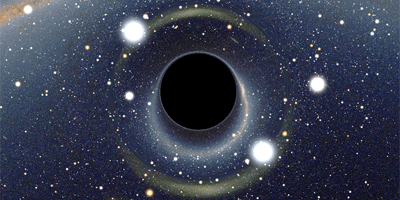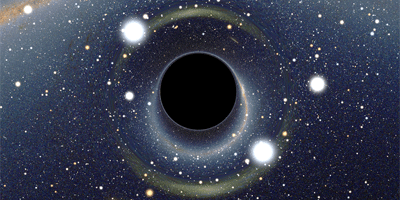Black Holes Weigh the Possibility of a Massive Photon
Black holes don’t usually get pushed around, but a very lightweight particle can theoretically stop a rotating black hole by setting off a so-called “black-hole bomb.” New calculations reported in Physical Review Letters show that photons, or photonlike particles, could be considered bomb-making material if they have a mass. A massive photon is not theoretically ruled out, but it would have implications for the dispersion of light and the existence of magnetic monopoles. However, the mere existence of spinning (unbombed) black holes constrains this possibility, thus allowing the authors to put the most stringent limit yet on the mass of the photon.
Falling into a black hole means curtains for most things. But physicists have shown that a hypothetical spin-zero particle—called a scalar boson—could quantum-mechanically bind to a rotating black hole if the particle’s Compton wavelength (which is inversely proportional to its mass) is roughly equal to the radius of the black hole. The resulting gravitational “atom” would lead to a runaway effect, or bomb, that zaps the hole’s rotational energy in a relatively short time.
Paolo Pani, at the Technical University of Lisbon in Portugal, and his colleagues extended these investigations to massive spin-one particles, such as massive photons. The calculations in this case are extremely difficult, so the researchers studied slowly rotating black holes and then extrapolated their results to fast rotation. They found that massive spin-one particles trigger more powerful “bombs” than scalar (spin-zero) particles. The observed rotation of supermassive black holes rules out photons (as well as photonlike particles, that some theories suggest could contribute to dark matter) of mass above . – Michael Schirber





